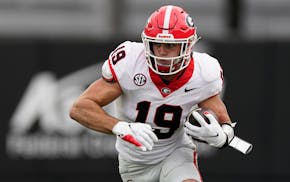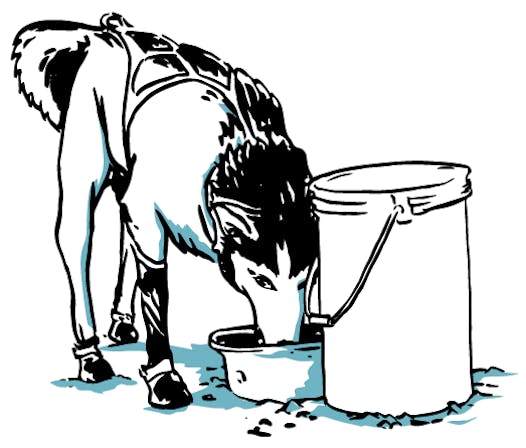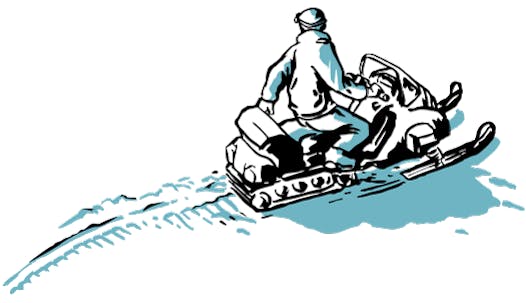Along Minnesota's North Shore – A clock starts ticking three or four months before the heart of winter. Sled dogs slip "into harness" and join their teammates on the gang line. Together with their mushers, these athletes hone skills and deepen strength to peak at race time.
The longest of those races in the Lower 48 is the John Beargrease Sled Dog Marathon, beginning Sunday in Duluth. The race trail runs nearly 300 miles along Minnesota's North Shore to the finish in Grand Portage up against the Canadian border.
Monthslong training regimens are the norm, but personal techniques vary and can give mushers an edge over the competition. Such ingenuity also offers them the best shot at bringing their dogs home healthy and happy.
Blake Freking of Finland, Minn., is a two-time Beargrease winner and the defending champion. His competition schedule takes him to four to six races across the United States and Canada each year. After general training begins in late summer, he transitions to another training style about a month before the Beargrease, then shifts again a week before its start. Of the 62 dogs in his kennel, he selects 12 to run the race.
Ryan Anderson and his dogs have won the Beargrease three times, and he's a two-time winner of the mid-distance race — an unprecedented accomplishment by the Cushing, Wis., musher. For the marathon, he will narrow his team to 12 from his 35-dog kennel. He has a set training schedule he uses for any of the four to five races he runs throughout the United States and Canada during a season.
"I always look at the race start-date and I work backward from that," Anderson said.
Eye on the calendar
For Freking, 46, training begins in late August or Sept. 1. By mid- to late December, his team starts working on endurance for the Beargrease, with longer, repeat runs on his kennel land and unplowed back roads. He said team speed for the Beargrease is often dictated by weather and trail conditions, and he estimated the team averages between 9-12 miles per hour. But his training runs are slower than the actual race.
Within that time frame, he also trains in intervals that include several runs per day to get the dogs into a routine of run-rest-run-rest. By mid-January, he begins working more on speed, then starts backing off.
"We taper down quite a bit just prior to the race just to make sure they're well-recovered and rested," he said.
The day before the race, Beargrease veterinarians examine every dog on every team for fitness to run the 300 miles. Freking's dogs get the day off for the vet check.
Tiered approach
Anderson, 38, said the start of his season (around Oct. 1) is later than for most mushers. His team builds miles in tiers, running on his property, logging roads and public trails at times when other traffic is minimal. They start with 6 miles and incrementally work to about 55. The number of dogs in each run varies depending on weather, trail conditions and specific goals. As the Beargrease nears, 12-14 dogs per run offer him options.
A former resident of Ray, Minn., Anderson avoids running in late August in part because of his more southern location in Wisconsin — it's a hot spot for deer ticks. He also wants temperatures to be consistently below 50 degrees at 8 a.m. so he can train without interruptions in days.
"There's no point in going out. I think I'm going to do more damage than good," he said.
Anderson begins specific race preparations three weeks before the race start. The final 10 days are key. He adjusts his lead-up schedule slightly to meet those 10 days precisely. This could mean running the dogs three or four days consecutively or giving them an extra off-day.
"I've found out that the dogs don't perform well if you give them three days off," he said. "Even if it's a one-hour run, it's better than just letting them sit."
Once he reaches the 10-day mark, he gradually cuts daily miles to about 10 to 16. Depending on the dogs' race finish, he maintains a schedule between competitions until the next 10-day stretch begins. A four-hour run ranges from 40 to 55 miles. He also prefers to run the day before a race, often loading them in the truck afterward and heading straight to the vet check.
Simulating reality
Freking said the most important training factor is preparing his team so they encounter nothing new on trail.
"I want them totally comfortable, totally relaxed, every step of the whole trail," he said. "That's where the camping comes in, getting up out of the checkpoint and leaving."
He and his wife, Jennifer Freking, also a musher, finished first and second in last year's Beargrease. They have a camp on their property to simulate race scenarios. Part of camping is to teach the dogs they can rest somewhere other than their doghouse. "They can be perfectly comfortable in a straw bed out in the woods," Freking said.
The mushers also acclimate their teams to the commotion of checkpoints. During training, he'll fire up a snowmobile and drive right past a team his wife is running.
"They're experiencing not only a simulated checkpoint, but they're getting the distractions that we would get while we were there," he said.
He said camping allows the dogs to use a variety of protective clothing during periods of rest that they might not wear when actually running. These include wrist wraps, and blankets or jackets to sleep under, all of which help dogs retain heat rather than burn calories for warmth.
By contrast, Anderson said he's tried simulating actual race situations but he thinks his everyday training is equivalent. The few dogs who have never experienced a checkpoint will figure it out quickly from the others. He also jockeys their intervals of rest with training runs at different times of day.
Rest and recovery
Freking's kennel features a 3-acre enclosure for the dogs to run freely on some rest days. He said when dogs are in a team situation they have a different social interaction than when they just cut loose. Free runs aid active recovery and keep their bodies moving. "It's such a happy time for them," he said. "They're just out there being dogs, running around in circles, chasing each other just having a ball."
Anderson said rest and recovery time also is a chance to assess each dog's well-being. Small cues, like lack of normal appetite and playfulness, help him balance the fine line between a dog's need for rest or its getting out of rhythm.
"You're always doing what's best for the dog … Just by giving him that extra day, or two days off, changes everything altogether," he said. "[But] they're athletes. They can't take too many days off and stay in tune."
Dealing with extremes
Both mushers said weather and trail conditions are among the biggest challenges. They've raced through high winds, deep cold and driving snow, and above-freezing rain and 12-inch slush.
Freking said his demeanor is critical to how well dogs react. They might wonder why they're in a blizzard and turn to a familiar presence for calm and confidence.
"They're keying off us. So, if we get amped up or excited or stressed out, they respond accordingly," he said. "They respond based on how we respond."
Anderson said he trains in every possible scenario. For extreme cold, he outfits the team with jackets and booties. During the run, he assures the dogs that everything is going to be fine. They'll all get home to food, a warm bed and all the things they need in life. Plus, it's as much training for the musher as for the dogs. The dogs just handle it better. (See related story about dog essentials.)
"I think the musher is always the weak link," he said.
Scott Stowell is a freelance writer and photographer from Ely. He can be reached through writingoutfitter.com.
Rivalries on tap with Barcelona-Chelsea and Lyon-PSG in Women's Champions League semifinals





